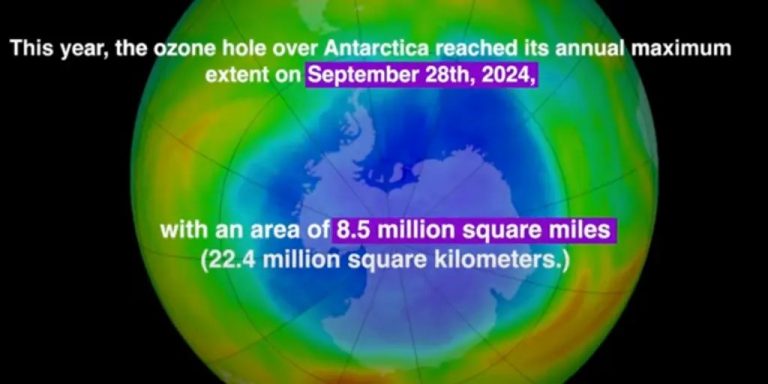Steve Gorham
“In 2015, NASA scientists predicted that the ozone hole would be half closed by 2020. But that didn’t happen. Other scientists predicted that the hole wouldn’t start disappearing until 2040 or later. But this The longer the hole lasts, the more likely it is that the ozone layer is dominated by natural factors, rather than human CFC emissions.
Another year has passed, and the stubborn ozone hole over Antarctica still hasn’t disappeared. Data from the National Aeronautics and Space Administration (NASA) show that the ozone hole is roughly the same size as it was over the past 30 years. But will scientists admit they failed to save the ozone layer?
background
Ozone is made up of three oxygen atoms (O3). 90% of the ozone in the atmosphere is found in the stratosphere, a layer of the atmosphere approximately 10 to 50 kilometers above sea level. The amount of ozone in the atmosphere changes with the time of year.
Dr. Mario Molina and Dr. Sherwood Rowland of the University of California published a paper in 1974 warning that industrial chlorofluorocarbon (CFC) pollution was damaging the ozone layer in the Earth's stratosphere. CFCs are gases used in hairspray, refrigerators and insulation foam.
Molina and Rowland's theory posits that CFCs produced in human industry travel upward through the atmosphere to the stratosphere, where ultraviolet radiation breaks down CFC molecules, releasing chlorine atoms. The chlorine then acts as a catalyst to break down ozone molecules into oxygen, thereby reducing ozone concentrations. According to theory, the more CFCs consumed, the greater the damage to the ozone layer.
In 1983, researchers from the British Antarctic Survey discovered that the ozone layer over Antarctica thinned in August, September and October. This is called the ozone hole. This seemed to confirm the theory of Molina and Rowland, who won the Nobel Prize in Chemistry in 1995 for their work.
Montreal Protocol (1987)
The ozone layer blocks ultraviolet rays and protects the Earth's surface from high-energy radiation. According to scientists, degradation of this layer can increase the incidence of skin cancer and cataracts and lead to immune system problems in humans. exist Earth is in balance (1992), Al Gore claimed that hunters reported sighting blind rabbits in Patagonia and that fishermen caught blind fish due to humans destroying the ozone layer, but this has not been confirmed.
In 1987, 29 countries and the European Community signed and implemented the Montreal Protocol on Substances that Deplete the Ozone Layer. Over the next decade, the treaty's signatories grew to more than 180 countries, all of which agreed to ban the use of CFCs.
World consumption of ozone-depleting substances (ODS), or chlorofluorocarbons, began to decline in 1990 due to bans under the Montreal Protocol. More than 99%.
result?
The Montreal Protocol is hailed as a successful international example of how countries can unite to solve major environmental issues. The protocol is hailed as a model for eliminating greenhouse gas emissions and curbing global warming. But even though CFCs have been eliminated, the ozone hole remains as large as ever.

NASA reported this fall that the average ozone hole area from September 7 to October 13 once again reached 23 million square kilometers, roughly the same level as it had been over the past three decades from 1994 to 1995. Although world ODS consumption has been nearly eliminated, the gap remains large.
In 2015, NASA scientists predicted that the ozone hole would be half closed by 2020. But this has not happened. Other scientists predict that the hole will not begin to disappear until 2040 or later. But the longer the hole persists, the more likely it is that the ozone layer is dominated by natural factors, rather than human CFC emissions.
___________________
Steve Goreham is a speaker and best-selling author on energy, environment, and public policy Green Collapse: The coming failure of renewable energy. his latest wall street journal The column “If Green Energy Is the Future, Bring a Fire Extinguisher” drew national attention to the issue of lithium batteries.
Relevant
